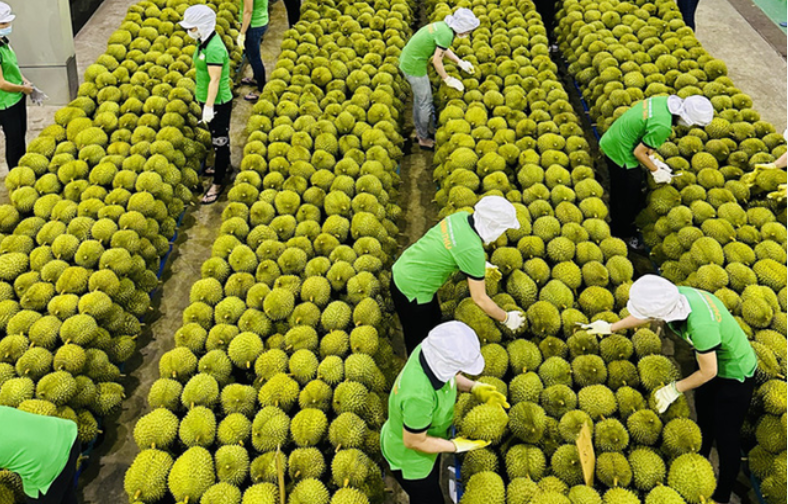Vietnam’s agriculture shifts from quantity to quality to win new markets
G+ ( en.mae.gov.vn/vietnams-agriculture-shifts-from-quantity-to-quality-to-win-new-markets-9039.htm)
From fragrant rice to organic produce, Vietnam’s agriculture is evolving to meet global demand for sustainable, high-quality food, a key step in expanding its footprint beyond traditional export markets.
Reducing dependence on traditional markets
For decades, Vietnamese agricultural products have built a strong presence in traditional export destinations such as China, the United States, the European Union, Japan, and South Korea. These partners have fueled the sector’s rapid growth: China remains a leading buyer of rice, fruit, and seafood, while the U.S. and EU import vast volumes of wood products, cashew nuts, coffee, and processed fishery goods.
But those established markets are not without risk. Even a small policy change or new technical barrier can have an immediate impact on export revenue. China has repeatedly tightened inspection and food safety regulations, causing delays for Vietnamese shipments at border gates. The EU enforces some of the world’s strictest standards on pesticide residues, traceability, and sustainability certification, while the U.S. maintains rigorous quarantine measures, particularly for seafood.
Such volatility has made clear that Vietnam cannot rely solely on its familiar customers. To safeguard growth and strengthen resilience, the country is now seeking to diversify its export portfolio , both geographically and by product type , aiming to reduce vulnerability and enhance its reputation as a reliable food supplier.
The Ministry of Agriculture and Environment and Vietnamese exporters are moving assertively to explore new opportunities in emerging markets. Rice exporters have opened trade routes to the Middle East, Africa, and parts of South America , populous regions with strong demand for affordable staples.

Analysts from the WTO and Integration Center note that market diversification not only helps Vietnam minimize dependence but also opens room for products with higher value added. The rice industry, for instance, is no longer limited to ordinary white rice; it is increasingly focusing on fragrant, specialty, and high-quality varieties designed for discerning consumers.
Growing global interest in green and sustainable food also plays to Vietnam’s advantage. The country is gradually transitioning toward organic and circular farming systems that meet international certification standards.
The results of this strategy are becoming evident. Vietnamese rice now reaches nearly 160 countries and territories, with new contracts signed across Europe, the Middle East, and Africa. Several tropical fruits , once confined to regional markets , have gained official entry into high-income destinations such as New Zealand, Australia, and Canada. These milestones mark a major step forward in broadening the reach of Vietnamese agriculture.
However, entering new markets is far more complex than securing trade deals. The toughest challenge for Vietnamese businesses lies in consistently meeting stringent quality, safety, and transparency standards. Many emerging importers now require detailed documentation on pesticide use, labor practices, and supply-chain traceability.
To stay competitive, producers must invest in post-harvest technology, deep processing, and brand development rather than relying on bulk exports of raw materials. Low-value, easily substitutable goods no longer fit the global marketplace.
The rice sector illustrates this transformation. Instead of prioritizing quantity, major exporters are targeting premium segments with fragrant, organic, and specialty varieties such as ST25, repeatedly recognized among the world’s best-tasting rice. In the fruit industry, cooperatives are adopting VietGAP and GlobalGAP standards to meet buyers’ sustainability expectations, while seafood processors are modernizing cold-chain systems to preserve freshness and meet import inspection requirements.
Technology is also reshaping production and logistics. Digital traceability platforms allow buyers to verify the origin of goods instantly, while satellite-based monitoring helps ensure compliance with environmental and deforestation-free sourcing rules , a growing concern in markets like the EU.
Leveraging free trade agreements
Vietnam’s network of free trade agreements (FTAs) , including the CPTPP, EVFTA, and UKVFTA , has created new gateways for expansion. These agreements not only cut tariffs but also impose stricter standards on food safety, labor, and sustainability. Meeting those conditions is both a challenge and an opportunity for Vietnamese exporters to upgrade their operations.
Trade experts describe these FTAs as both a “passport” and a “test”. They allow access to major markets, but only for products that satisfy international norms. To fully benefit, enterprises must modernize their management systems, strengthen compliance, and build brand credibility rather than relying solely on preferential tariffs.
Beyond individual effort, government backing remains essential. Ministries are intensifying trade promotion, negotiating market-access protocols for more fruit and livestock products, and improving export quality control. These measures, together with private-sector innovation, form the twin pillars of Vietnam’s agricultural competitiveness.
As Vietnam pushes deeper into global value chains, the shift from quantity to quality has become both inevitable and strategic. Agricultural exports are no longer measured only by tonnage but by brand reputation, sustainability, and consistency.
In recent years, the country has aligned agricultural development with environmental goals, encouraging farmers and enterprises to adopt climate-smart and low-emission practices. Green growth and circular production are now guiding principles for the sector’s long-term resilience.
Trade specialists believe that by combining policy coherence, enterprise initiative, and consumer-driven innovation, Vietnam can maintain its position as one of the world’s most dynamic agricultural exporters. As The Anti-Dumping Review observed, “the synergy between sound national policy and strong corporate capability will generate the collective strength needed for Vietnam to move from a major producer to a trusted global brand in sustainable agriculture”.
Nguyen Thuy